If you've just bought your first Nikon DSLR or are looking to extend your Nikon kit with a new lens, the wealth of choice can be a bit daunting. Don't worry though, as we're here to help guide you through the vast array of optics available to insure you buy the best Nikon lens for your DSLR.
We've split this guide into two sections. First we'll look at the best Nikon lenses for DX format DSLRs. These are lenses suited (and in a lot of cases, specifically designed for) Nikon's range of APS-C sensor DSLRs like the D3500, D5600 and D7500. On the following page we'll take a closer look at what are the best Nikon lenses for FX format DSLRs – Nikon's line of full-frame cameras like the D850.
With that in mind, let's with the best lens for your Nikon DX format DSLR. Buy one of these DSLRs and they're typically sold as a kit that comes complete with a standard zoom lens.
However, while a kit zoom lens should prove sufficient for many photographic scenarios, it’ll come up short in terms of telephoto reach for shooting action sports and wildlife. You might also find it lacks a sufficiently wide viewing angle for landscape and interior shots, and it won’t fit the bill when you need a tight depth of field to blur the background in portraiture, or for extreme close-ups in macro shooting.
The biggest bonus of any interchangeable lens camera is that you can fit the ideal glass for the job at hand, from ultra-wide zooms to super-telephoto lenses, and fast primes in between. While there are dedicated DX format lenses designed to be used with APS-C sensor cameras, sometimes FX format lenses are actually a better option, especially if you're thinking of upgrading to full-frame at a later date.
Independently manufactured lenses from the likes of Sigma and Tamron often give similar or even better performance than own-brand Nikon lenses
If you’ve got a Nikon DSLR, it makes sense to use Nikon lenses. However, independently manufactured lenses from the likes of Sigma and Tamron often give similar or even better performance than own-brand Nikon lenses – and the prices are often more competitive.
So, after rigorous testing of all the contenders, both in our lab and in ‘real-world’ shooting conditions, here’s our list of the 10 best Nikon lenses you can buy for your DX format DSLR. We’ve included outright winners in all popular categories, as well as best-value alternatives to suit a tighter budget.

Best Nikon lenses for DX format DSLRs
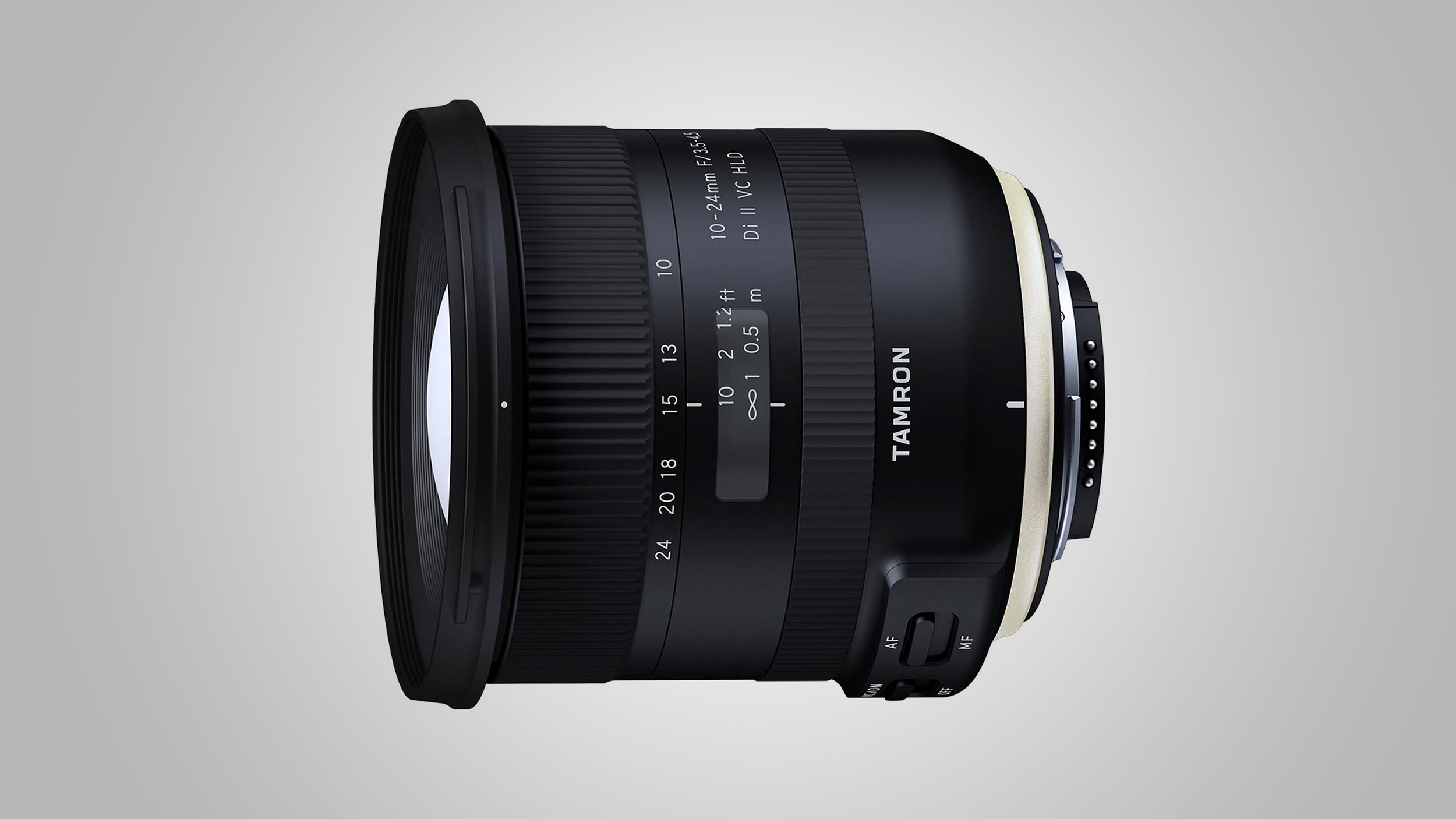
A major upgrade from Tamron’s original 10-24mm lens, the new ‘VC HLD’ edition adds optical stabilization and a new autofocus system, which is quicker and quieter, as well as improving handling, as the focus ring no longer rotates during autofocus. The high-quality build includes weather seals and a keep-clean fluorine coating on the front element. Image quality benefits from good sharpness and contrast, along with well-contained distortions for an ultra-wide zoom lens, and fairly minimal color fringing.
Great-value option: Sigma 10-20mm f/3.5 EX DC HSM
For about the same money as Nikon’s budget AF-P DX 10-20mm f/4.5-5.6G VR lens, this Sigma is more refined, better built and delivers greater image quality, but lacks stabilization.


We’ve got so used to autofocus that a lens which only allows you to focus manually might sound like a retrograde step. However, the huge depth of field enabled by a lens with such a short focal length makes accurate focusing less critical. Better still, the Samyang’s distance scale enables you try traditional focusing methods for landscape and street photography, like setting the hyperfocal distance and ‘zone focusing’. Smart design and high-quality glass help to ensure good image quality, while nano-structure coatings help to keep ghosting and flare to a minimum.
Great-value option: N/A
Wide-angle prime lenses for DX format cameras are practically non-existent. The Samyang 10mm is not only the best choice, it’s also the best value.


On balance, this is the best DX format standard zoom lens for Nikon cameras. It’s beautifully built and features no less than four ED (Extra-low Dispersion) elements, along with nano-structure coatings plus fluorine coatings on the front and rear elements. Ring-type ultrasonic autofocus is fast and near-silent, and the VR (Vibration Reduction) stabilization system is highly effective. However, while image quality is very good overall, sharpness drops off a little at the long end of the zoom range, and barrel distortion is clearly noticeable at the short end.
Great-value option: Sigma 17-70mm f/2.8-4 DC Macro OS HSM | C
Relatively compact and lightweight, this Sigma has a variable yet fairly fast aperture rating and delivers impressive image quality, all at a bargain price.


Thanks to the 1.5x focal length multiplier or ‘crop factor’ of DX format Nikon cameras, this lens gives an effective focal length of 52.5mm, making it ideal as a standard prime. Typical of Tamron’s recently launched prime lenses, it’s FX (full-frame) compatible, so you can use it as a wide-angle prime if you upgrade to an FX camera later on, without being limited to ‘crop mode’. Ring-type ultrasonic autofocus is fast and quiet, with the usual manual override facility, and Tamron’s proprietary VC optical stabilization system is very effective.
Great-value option: Nikon AF-S DX 35mm f/1.8G
It’s less expensive to buy than the Tamron, matches it for aperture rating and delivers very pleasing image quality, but it’s not as well built and lacks stabilization.

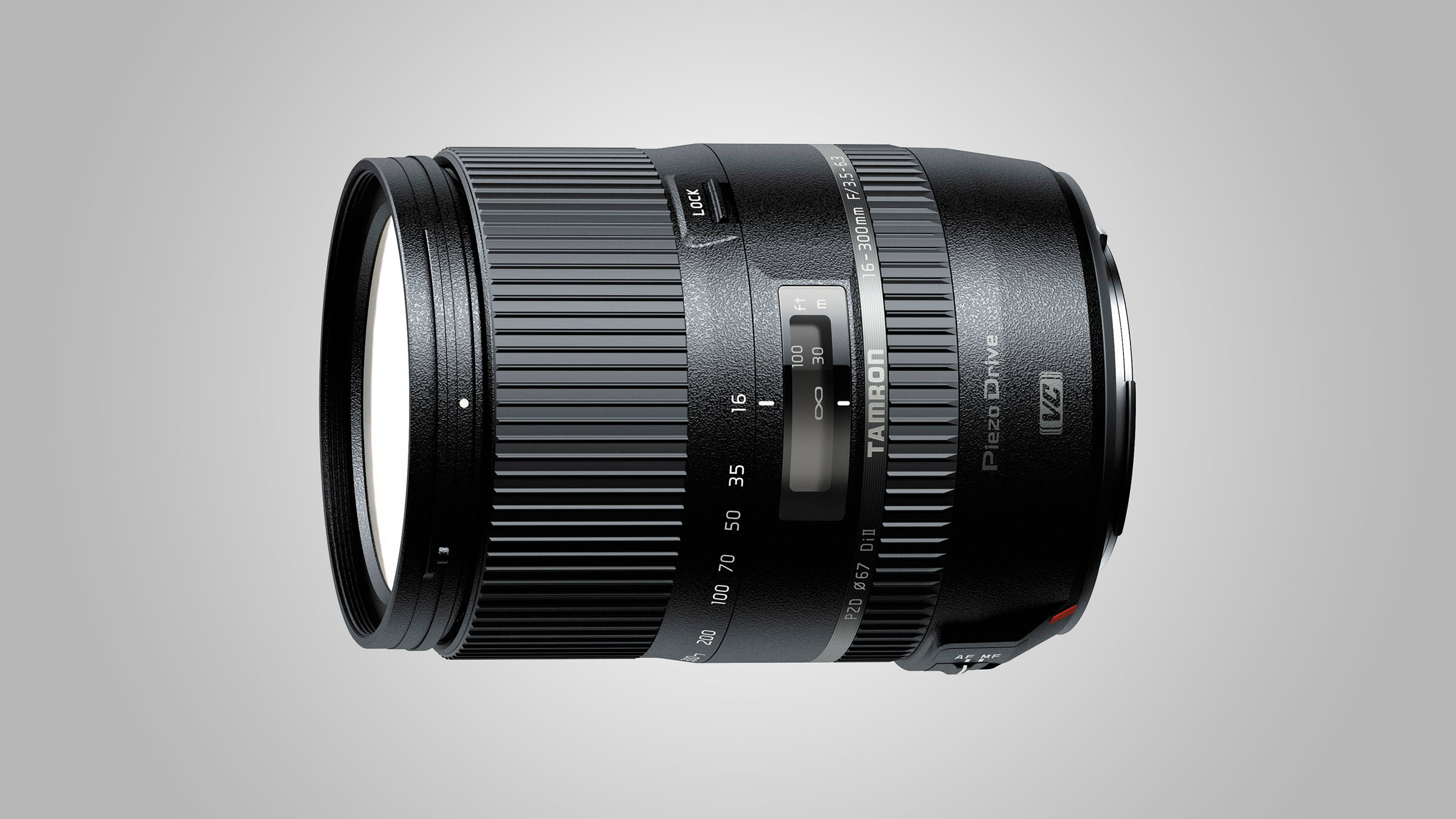
Competitively priced compared with Nikon’s own-brand superzoom lenses, this Tamron shrinks to 16mm rather than the usual 18mm at the short end of its zoom range, and while those couple of millimeters might not sound much, the extra wide-angle potential is very noticeable in practice. There’s no skimping at the long end either, with a generous 300mm maximum focal length. Unusually for a PZD (Piezo Drive) ultrasonic autofocus system that relies on a small motor rather than a ring-type arrangement, the focus ring remains fixed during autofocus while adding a manual override facility. The only real downside is that, as with most superzoom lenses, sharpness drops off a little at the long end of the zoom range, and barrel distortion is quite pronounced at the short end.
Great-value option: Tamron 18-200mm f/3.5-6.3 Di II VC
Remarkably compact and lightweight for a superzoom, this new edition of Tamron’s 18-200mm makes an excellent ‘travel lens’ and is unbeatable value at the price.


Compared with budget 50mm lenses like the Nikon AF-S 50mm f/1.8G, this one is a fair bit more expensive. It also lacks the more usual and slightly faster f/1.4 aperture rating of most similarly priced lenses. However, the Tamron is really nicely made, and boasts an optical stabilizer that’s usually lacking in ‘fast standard prime’ lenses. It’s full-frame compatible, but gives an effective focal length of 67.5mm on DX cameras, ideal for portraiture. Bokeh (the pictorial quality of defocused areas) is an important consideration with portrait lenses, and it’s here that Tamron strikes gold, producing a deliciously smooth and creamy background blur while retaining good sharpness at the plane of focus.
Great-value option: Nikon AF-S 50mm f/1.8G
If you’re willing to sacrifice a little in terms of build and image quality, and can do without optical stabilization, this budget Nikon lens only costs about a third of the price of the Tamron.

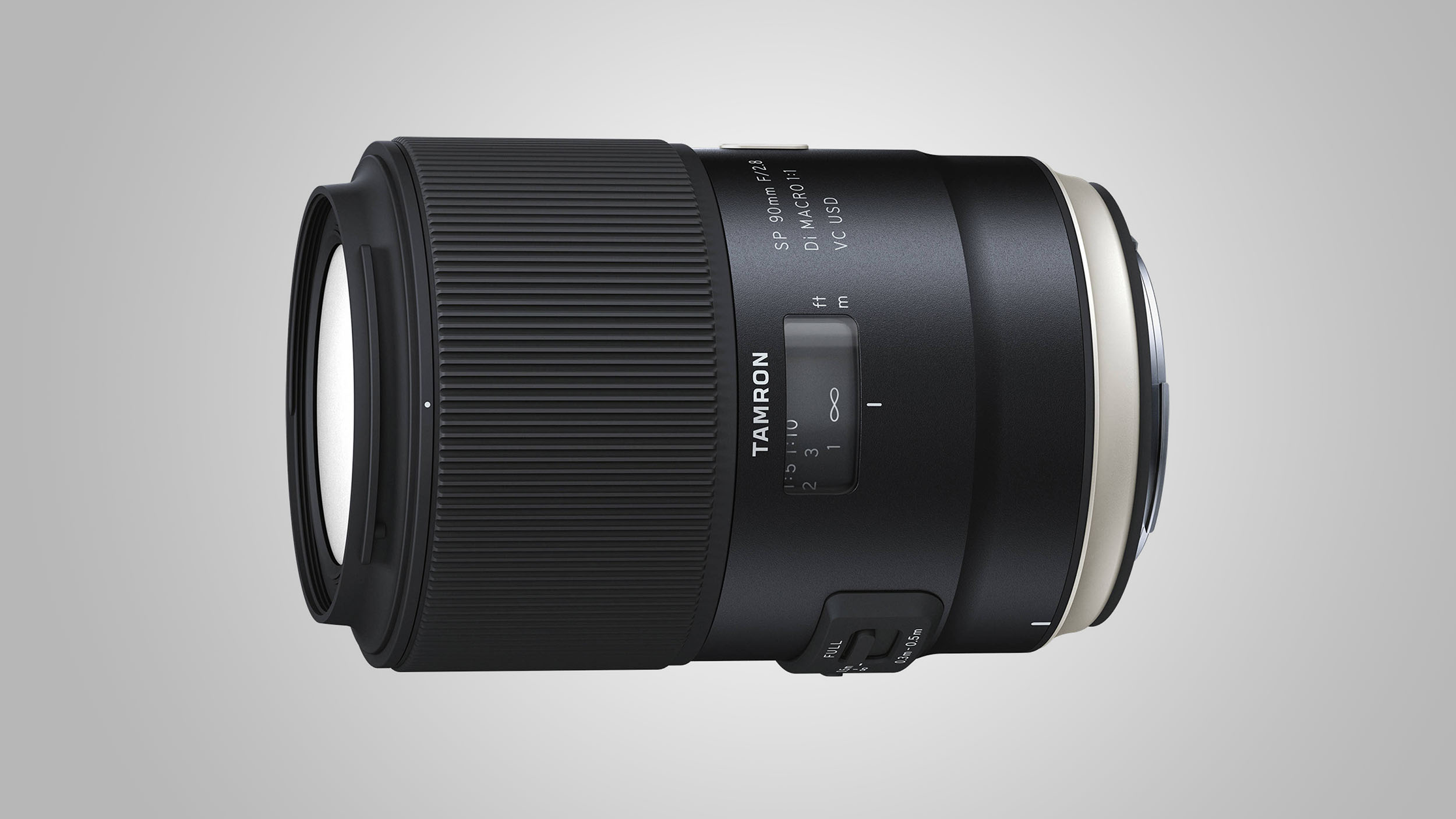
Not to be confused with the preceding Tamron 90mm macro lens of the same name (which had a gold ring around the barrel), this one adds higher-grade glass, dual nano-structure coatings, improved weather seals and a fluorine coating on the front element. More importantly, it has a redesigned autofocus system that’s optimized for close-up shooting, and a new ‘hybrid’ optical stabilizer that counteracts axial shift (up-down or side-to-side movement) as well as the usual angular vibration (wobble). The net result is that this lens is the best in its class for capturing consistently sharp extreme close-up shots. Even so, at full 1.0x magnification, using the shortest focus distance, you’ll still need a tripod.
Great-value option: Sigma 105mm f/2.8 EX DG OS HSM Macro
It lacks the Tamron’s hybrid stabilization system and weather seals, but offers refined handling and delivers superb image quality.

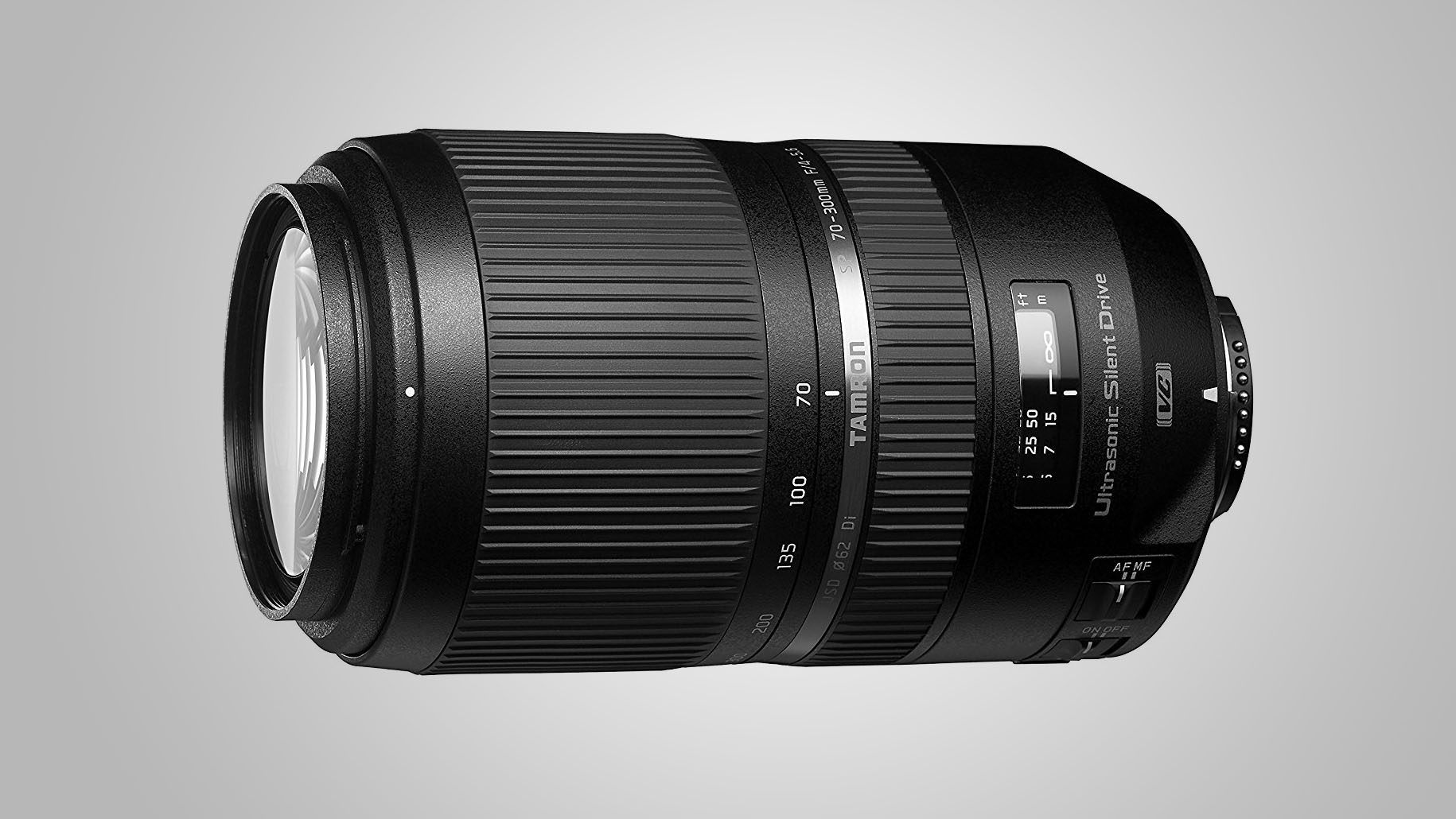
Our favorite budget telephoto zoom used to be the FX format Nikon AF-S 70-300mm f/4.5-5.6G IF-ED VR, but sadly that lens has now been discontinued. Nikon has launched a much more expensive replacement, as well as reasonably priced DX 70-300mm lenses, with and without VR, but the Tamron lens offers better build quality and image quality than the DX lenses, and is much more affordable than the new Nikon FX format lens. The ring-type ultrasonic autofocus system is fast and quiet, and sharpness and contrast are very good throughout the entire zoom range, although as usual with telephoto zooms, sharpness does drop off a little at 300mm. Tamron’s optical stabilizer works well to ensure consistently sharp images in handheld shooting.
Great-value option: Nikon AF-S DX 55-200mm f/4-5.6G ED VR II
This DX format lens is significantly cheaper to buy than the FX format Tamron, and, while it doesn’t offer as much telephoto reach, its retractable design makes it remarkably compact for stowing away.


At only about half the price and half the weight of Nikon’s top-grade 70-200mm f/2.8 lens, this f/4 edition has a lot going for it, especially for use with DX format cameras. Not only does the weight reduction make the lens more comfortable for prolonged handheld shooting, but the overall balance feels better with relatively lightweight DX bodies – and it’s still an FX format lens, so can be used on both DX and FX bodies without any restrictions. Image quality is simply stunning, with fabulous sharpness and contrast, along with highly effective stabilization. A further bonus is that with most recent upmarket Nikon cameras that support autofocus at f/8, you can still use autofocus with an optional 2x teleconverter. One disappointment is that if you want a tripod collar to enable a better balance when using a tripod or monopod, especially in portrait orientation shooting, you’ll need to buy one as an optional extra, and the genuine Nikon item is very pricey.
Great-value option: Sigma 70-200mm f/2.8 EX DG OS HSM
A great bargain buy, the Sigma has the faster, often favored f/2.8 aperture rating and is a very good performer, although it lacks weather seals.


One of the most exciting recent lenses from Nikon, this super-telephoto zoom is unusual in having a constant aperture rating, which is none too sluggish at f/5.6. It’s an FX format lens that gives a maximum ‘effective’ focal length of a mighty 750mm on DX format bodies; that’s not quite as much as using one of Sigma or Tamron’s 150-600mm zooms, but it’s not far behind. As usual with Nikon’s ‘E’ type lenses, the aperture is electromagnetically controlled, which enables better accuracy and consistency in exposure when shooting sequences in high-speed continuous drive mode. This is great for sports and wildlife photography, to which the lens is ideally suited; however, it does make the lens incompatible with older Nikon DSLRs. The VR system features an additional Sport mode, which makes it much easier to track fast and erratically moving subjects through the viewfinder.
Great-value option: Sigma 100-400mm f/5-6.3 DG OS HSM | C
The maximum focal length is comparatively modest, but Sigma’s new Contemporary class super-telephoto zoom is wonderfully compact and lightweight, making prolonged handheld shooting less of a strain.

- Best Nikon camera
- Best wide-angle lenses for Nikon DSLRs
- Best telephoto lenses for Nikon DSLRs
- Best super-telephoto lenses for Nikon DSLRs
- Best macro lenses for Nikon DSLRs
- Best portrait lenses for Nikon DSLRs
It’s often said that any camera is only as good as the lens you put on the front of it. Recent FX (full-frame) format Nikon bodies like the D810 and D850 certainly set the bar high, with high-pixel-count sensors that draw attention to any shortfall in sharpness. But there’s more to a good lens than just its ability to resolve fine detail.
Handling is a key factor in how a lens performs in real-world shooting. You’ll need fast and accurate autofocus, to ensure you nail defining moments in anything from a fleeting expression in portraiture to action sports and wildlife photography. In handheld shooting, effective optical stabilization can make the difference between capturing images that are fit for a gallery, or just fit for the bin.
It’s certainly not always the case that own-brand Nikon lenses outperform competitors from independent manufacturers like Sigma and Tamron
Even outright image quality is about much more than mere sharpness. Good contrast is highly desirable, even when shooting wide-open at the largest available aperture. Other attributes we tend to look for are minimal distortion and color fringing, good resistance to ghosting and flare, and reasonably low vignetting (darkened image corners). Increasingly, shortfalls in various aspects of image quality can be corrected in-camera, or in post-processing, but that’s a poor substitute for great optical quality.
It’s certainly not always the case that own-brand Nikon lenses outperform competitors from independent manufacturers like Sigma and Tamron. Indeed, some of the latest lenses launched by independent companies are simply superb, and there are some serious bargains to be had.
Based on our extensive lab tests and ‘real-world’ testing, we’re proud to present our top 10 lenses in a wide range of popular categories, as well as great-value alternatives to suit tighter budgets. Let’s take a closer look at all the winners.

Best Nikon lenses for FX format DSLRs
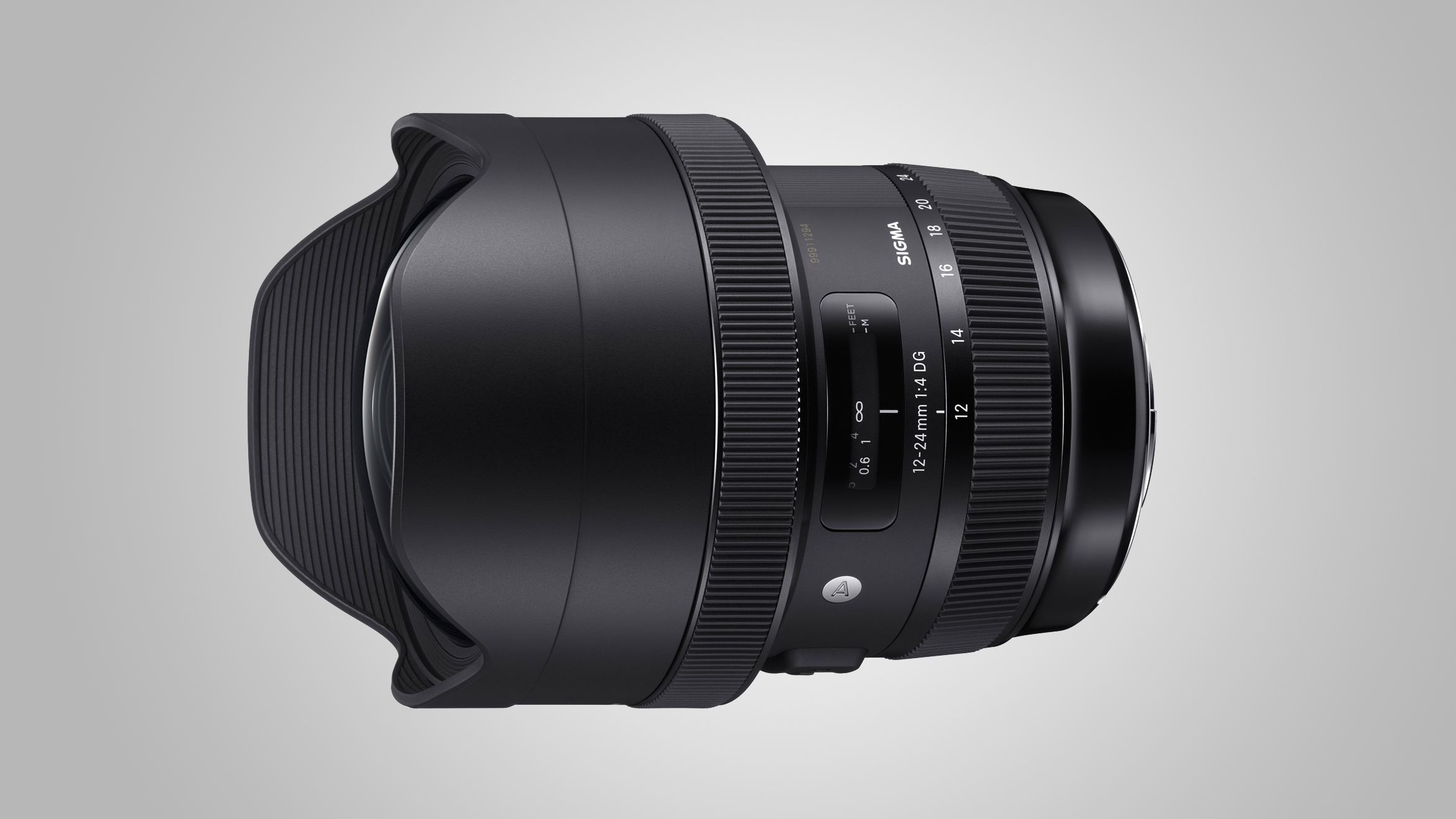
You have to go some to beat Nikon’s legendary AF-S 14-24mm f/2.8G ED ultra-wide zoom, but that’s exactly what Sigma has done with this spectacular lens. Like its predecessor, it boasts a class-leading maximum viewing angle, thanks to an incredibly short minimum focal length for an FX format zoom. However, the new ‘Art’ lens has upgraded optics with an extra-large-diameter aspherical element at the front and five top-notch FLD (Fluorite-equivalent Low Dispersion) elements. Fluorine coatings are applied to the front and rear elements, and the mounting plate gains a weather-seal ring. The autofocus system is revamped and noticeably faster, and the new lens switches to a constant-aperture design. From an image quality standpoint, sharpness and control over distortion are excellent, and represent considerable improvements over the previous edition. As with many ultra-wide lenses the hood is built-in, offering physical protection to the bulbous front element. However, this means you can’t easily fit filters, unless you go for a system like the Lee Filters SW150 Mk II.
Great-value option: Tamron SP 15-30mm f/2.8 Di VC USD
It’s not quite as ultra-wide as the Sigma, but this Tamron undercuts it for cost, while adding optical stabilization and a faster f/2.8 aperture rating.

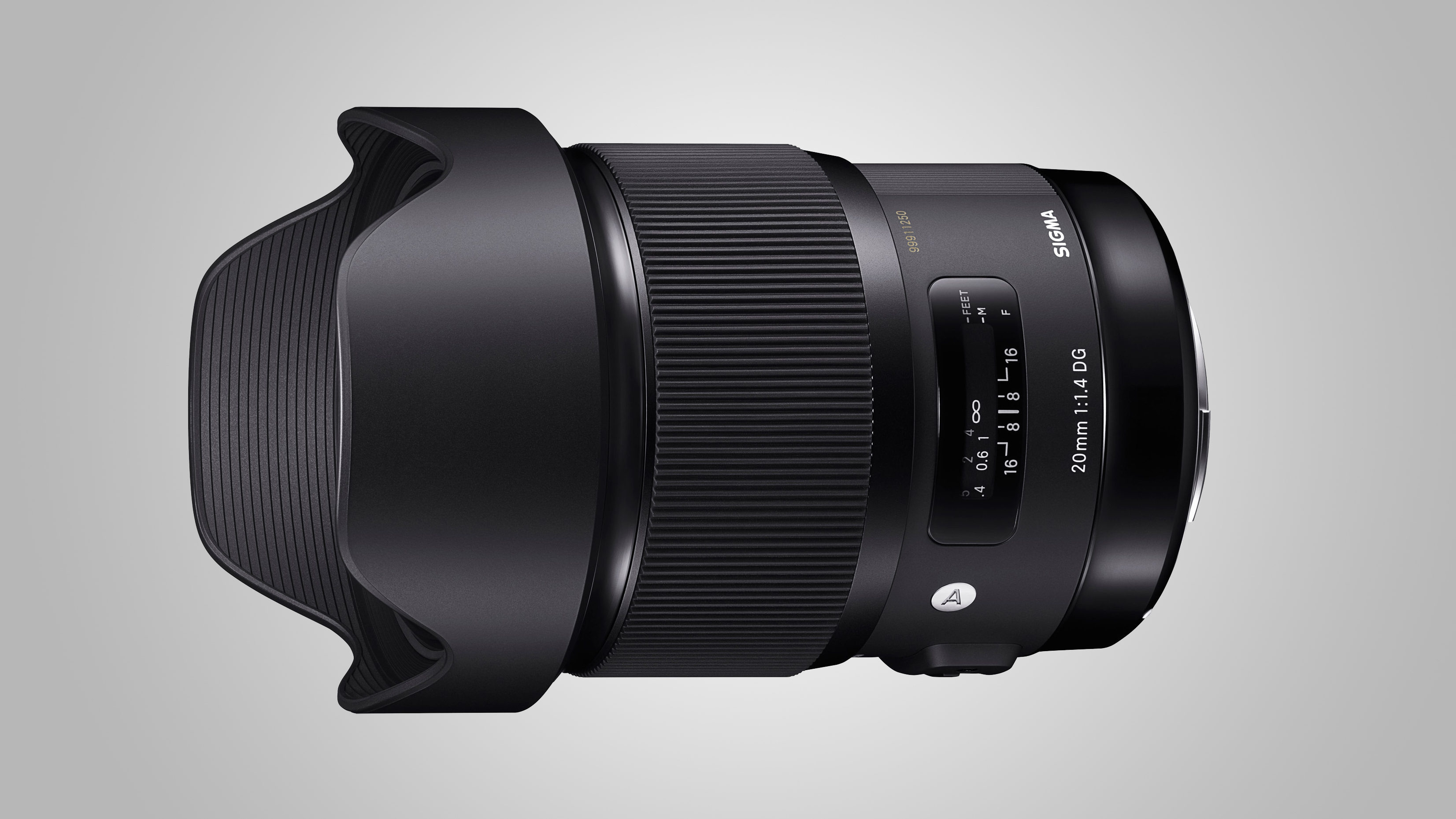
Sigma’s ‘Art’ lenses are designed to unleash photographers’ creative potential, delivering excellent image quality and fast aperture ratings. There’s a large selection of f/1.4 primes to choose from in the range, including 20mm, 24mm, 35mm, 50mm and 85mm lenses. This 20mm lens is not only the widest-angle f/1.4 optic in the group (there’s also a 14mm f/1.8 lens), but is remarkable for combining such a wide aperture with such a short focal length. The no-compromise design and superlative image quality are enabled by an extra-large-diameter aspherical lens; this makes for an undeniably chunky and heavy build, but it’s a beast of a lens.
Great-value option: Irix 15mm f/2.4 Firefly
It lacks autofocus, but this is a fabulous manual-focus lens that’s beautifully built and a real joy to use. The ‘Blackstone’ edition adds a couple of extra luxuries, but the Firefly is unbeatable value.


This lens literally dwarfs most standard zooms, but at least the physical length remains fixed throughout the zoom and focus ranges. It builds on the success of its predecessor, adding Vibration Reduction and improving the optical path and build quality. Enhancements include four ED elements, an HRI (High Refractive Index) element, Nano Crystal Coat, fluorine coatings on the front and rear elements, and an electromagnetically controlled diaphragm. Image quality is excellent in most respects, although color fringing can be noticeable if uncorrected, and vignetting is quite severe at f/2.8.
Great-value option: Tamron SP 24-70mm f/2.8 Di VC USD G2
The G2 (Generation 2) edition of Tamron’s 24-70mm lens combines excellent image quality with a tough build and great handling. The original edition is still on sale as well, and rather less expensive to buy.


Our top choice of ‘portrait prime’ for DX-format DSLRs is also our favored standard prime for FX cameras. Compared to the excellent Sigma 50mm f/1.4 Art lens, the Tamron loses two-thirds of an f/stop in aperture rating, but is a much more manageable size and weight, and gains optical stabilization. You could argue that you don’t really need stabilization in such a ‘fast’ lens, but we disagree. Standard primes are often used in preference to zoom lenses, for their excellent sharpness and minimal distortion, not just for their faster apertures. You might well want to dial in a medium or narrow aperture setting to extend the depth of field, so stabilization can be a big help in handheld shooting.
Great-value option: Nikon AF-S 50mm f/1.4G
Compared with the ‘budget’ Nikon AF-S 50mm f/1.8G, this f/1.4 lens is about twice the price, but still rather less expensive than the Tamron. It’s nice and sharp, but you do forego stabilization.


Superzooms for DX-format cameras are often referred to as ‘travel lenses’ because they deliver a big zoom range, stretching from wide-angle to telephoto focal lengths, usually in a fairly compact and easily manageable package. This avoids the need to carry more than one lens if you’re trekking around the city, or flying to the other side of the world. The travel-friendly theme is somewhat lost in the FX-format camp, however, and this superzoom tips the scales at 800g. Even so, it’s a useful lens for event photography and other times you need to quickly and repeatedly switch between wide-angle and telephoto shooting. As is often the case, the extended zoom range comes at the cost of compromised image quality – in this case it's good rather than great, with mediocre sharpness and severe distortions and vignetting.
Great-value option: Tamron 28-300mm f/3.5-6.3 Di VC PZD
It’s a cheaper option than Nikon’s FX-format superzoom and delivers similar image quality, but the autofocus system is comparatively basic and build quality doesn’t feel quite as good.

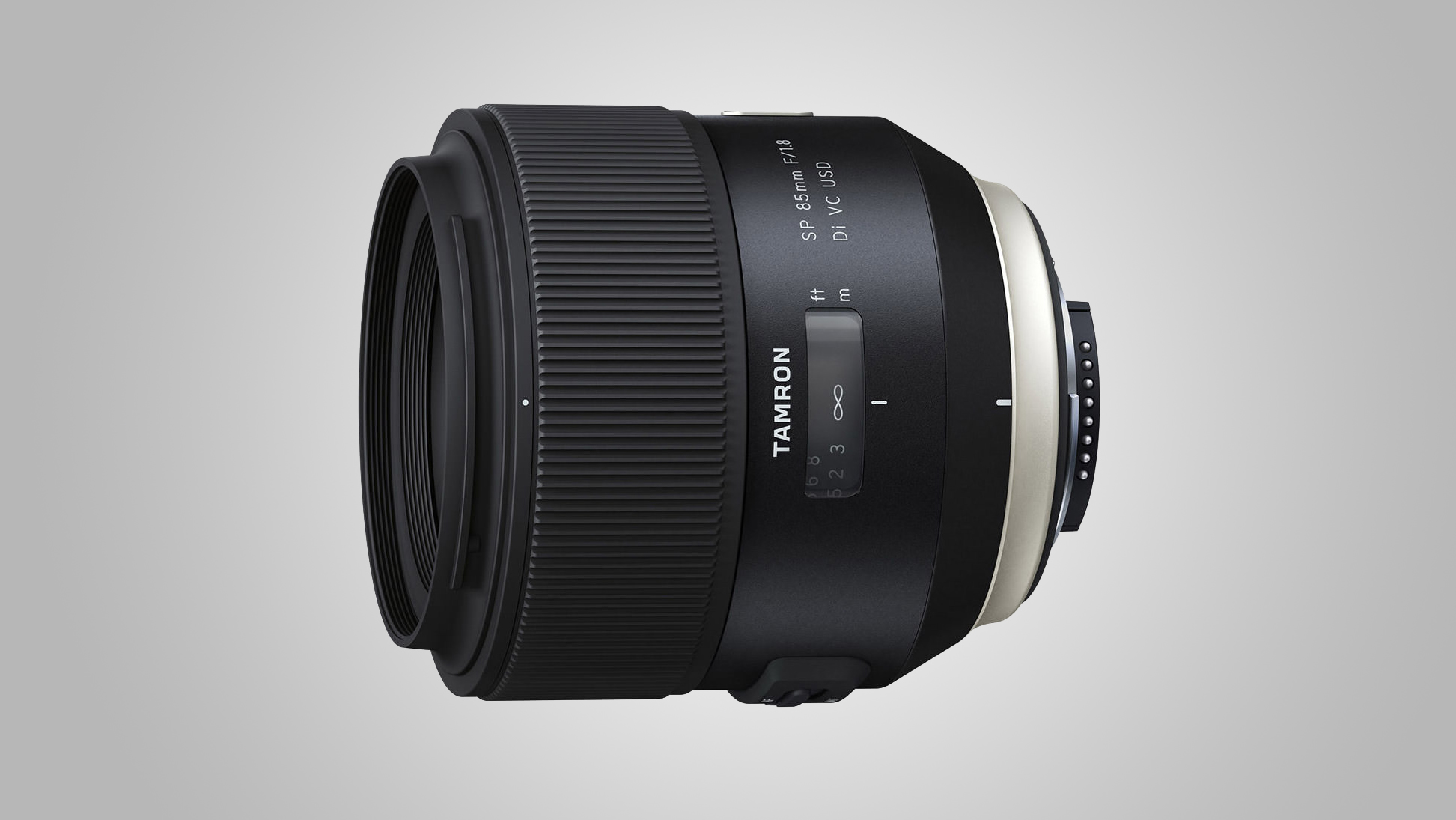
There are some fabulous 85mm f/1.4 portrait lenses on the market, including Nikon’s own AF-S 85mm f/1.4G and Sigma’s 85mm f/1.4 DG HSM | A. This Tamron can’t quite compete on aperture rating but adds optical stabilization, which is lacking in the other two lenses. It’s also significantly less expensive to buy. While the slightly narrower maximum aperture might seem to give the Tamron a disadvantage when it comes to blurring the background in portraiture, the lens actually produces a wonderfully smooth bokeh, while maintaining excellent sharpness at the point of focus. For indoor portraiture without flash, or for handheld shooting in low-light conditions, the stabilizer is well worth having, even when using a very wide aperture; it’s even more of a benefit when using narrower apertures for extending the depth of field, to put portrait sitters into the context of their surroundings.
Great-value option: Nikon AF-S 85mm f/1.8G
This Nikon lens is a bargain if you’re willing to stick with f/1.8 rather than stretching to an f/1.4 aperture, although it doesn’t feature stabilization.


Almost as expensive as Nikon’s popular Nikon AF-S 105mm f/2.8 G IF ED VR Micro lens, the latest edition of this Tamron classic includes a revolutionary hybrid optical stabilization system. Essentially, this can counteract shift in the vertical and horizontal axes, as well as angular vibration or wobble, which gives superior stabilization, especially for close-up shots. In our tests, the Tamron proved a little sharper than the Nikon, especially for extreme close-ups, while defocused areas look a little smoother.
Great-value option: Sigma 105mm f/2.8 EX DG OS HSM Macro
It lacks the Tamron’s hybrid stabilization system and weather seals, but has refined handling and delivers superb image quality.


Nikon’s pre-digital-age 70-300mm ED lens was hugely popular, and the later VR edition has long been a favorite with DSLR shooters. It’s now been replaced by this lens, which features much of Nikon’s latest technology, including an AF-P (Pulse) autofocus system based on a stepping motor. This delivers rapid performance for shooting stills, along with smooth and virtually silent focus transitions for movie capture. It also features an electromagnetically controlled diaphragm, for more consistent apertures in rapid-fire shooting using fast continuous drive mode. On top of that, you get Nikon’s recently introduced Sport VR mode, which makes it easier to track erratically moving subjects in the viewfinder. However, the AF-P autofocus and electromagnetic diaphragm control make the lens incompatible with some older DSLRs, and the relatively expensive price tag stretches the notion of a ‘budget telephoto zoom’.
Read our in-depth Nikon AF-P 70-300mm f/4.5-5.6E ED VR review
Great-value option: Tamron SP 70-300mm f/4-5.6 Di VC USD
As well as being our top pick for DX-format cameras, thanks to its good performance and relatively inexpensive price, this Tamron is also a smart budget buy for FX bodies.


The go-to telephoto for most professionals, a 70-200mm f/2.8 lens gives you good telephoto reach, and retains a respectable f/5.6 aperture rating at up to 400mm when used with a 2x teleconverter. Top tricks include auto and manual priority autofocus options, a Sport VR mode, and an electronically controlled diaphragm, all of which are also featured in Nikon’s new 70-300mm ‘budget’ telephoto zoom. This top-flight lens is supremely well built, however, more suited to professional use. The autofocus system is super-fast and image quality is stunning, with incredible contrast and sharpness.
Great-value option: Tamron SP 70-200mm f/2.8 Di VC USD G2
This directly competing second-generation Tamron’s 70-200mm f/2.8 lens is very nearly as good as the own-brand Nikon, but costs about half the price.


Despite significantly undercutting the popular Nikon AF-S 80-400mm f/4.5-5.6G ED VR for price, this Sigma ‘Sport’ lens delivers 50% more telephoto reach and packs a real punch in terms of performance. Rarely for a Sigma lens, it features a full set of weather seals, and there’s no shortage of high-tech treats. Auto and manual priority autofocus modes are available, and the clever zoom lock mechanism enables you to lock the position at any marked focal length, rather than just at the short end of the zoom range. Excellent contrast and sharpness are retained all the way to the maximum 600mm focal length, distortions and color fringing are very well controlled, and the ring-type autofocus system does well to keep up with even fast-moving subjects.
Great-value option: Sigma 150-600mm f/5-6.3 DG OS HSM | C
Nearly a kilogram lighter in weight, this Contemporary lens retains many of the advanced features of the Sport edition, but is cheaper to buy and less of a strain in handheld shooting.
